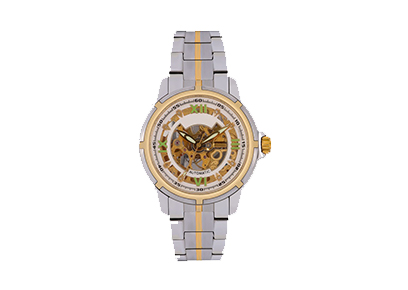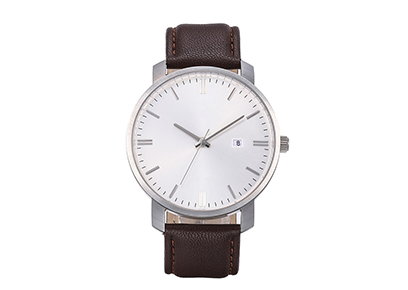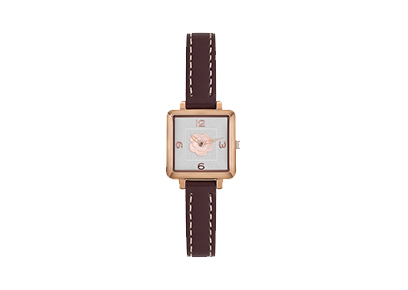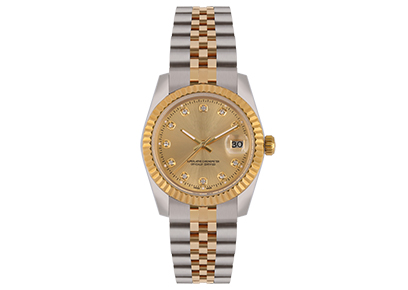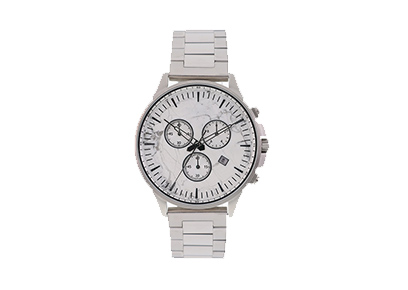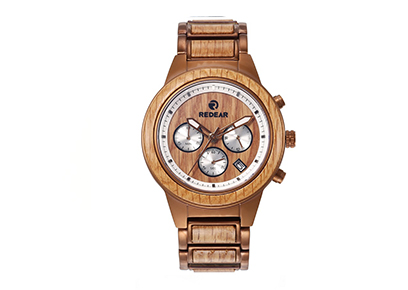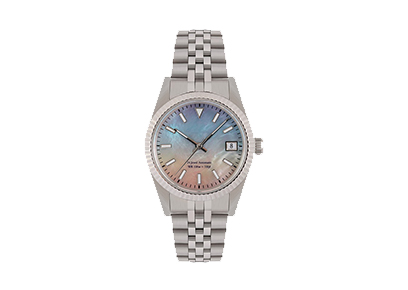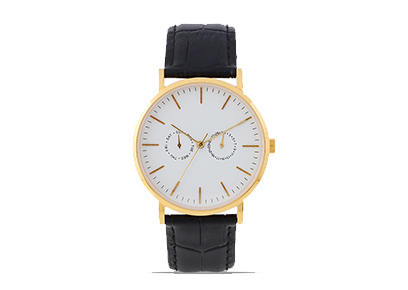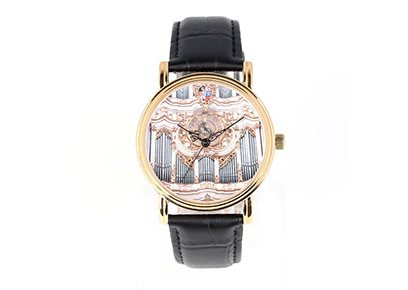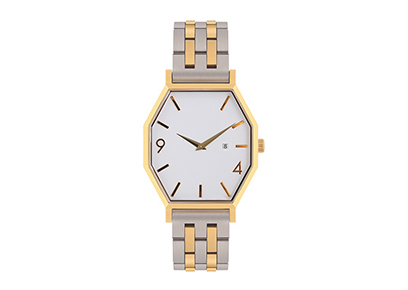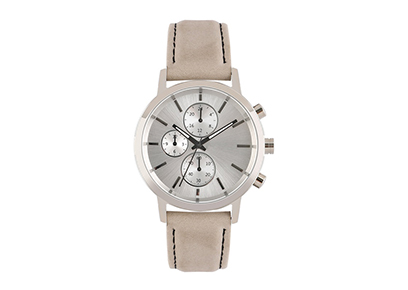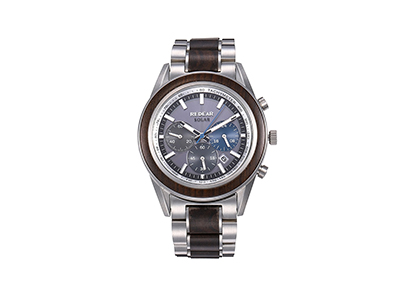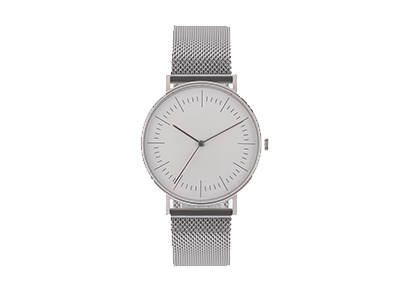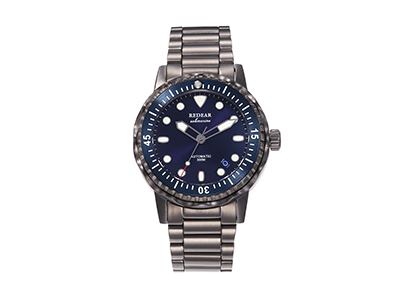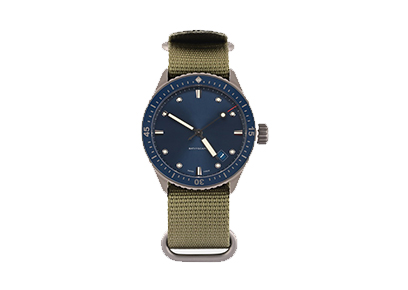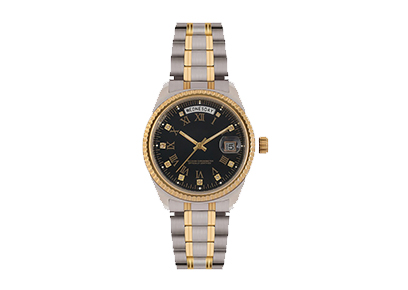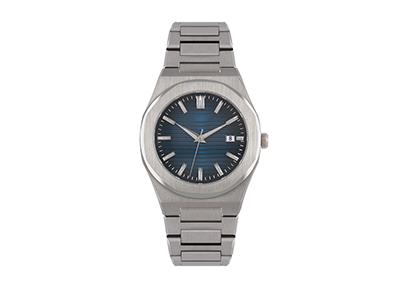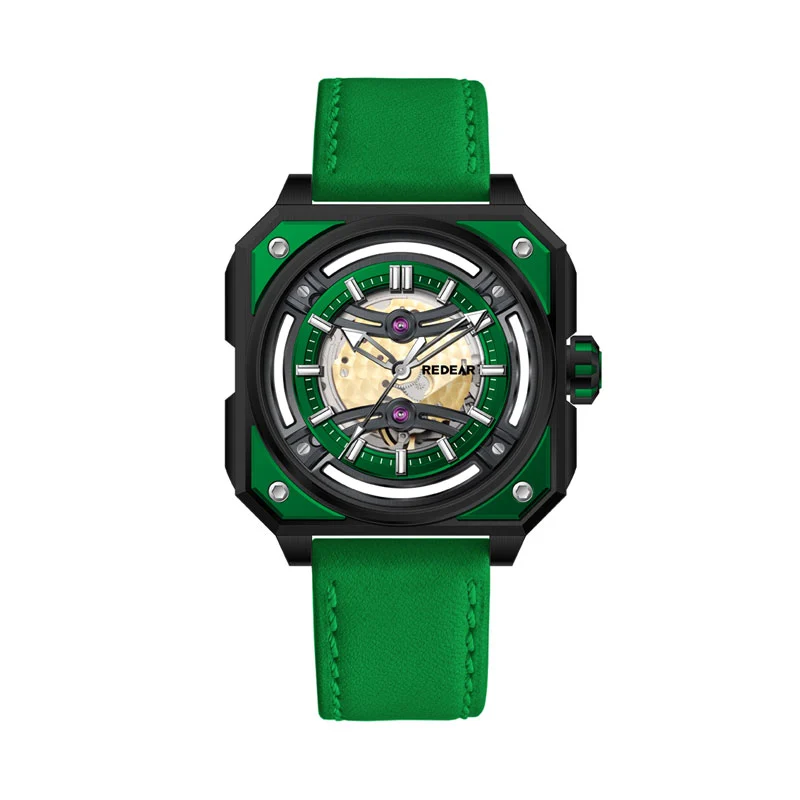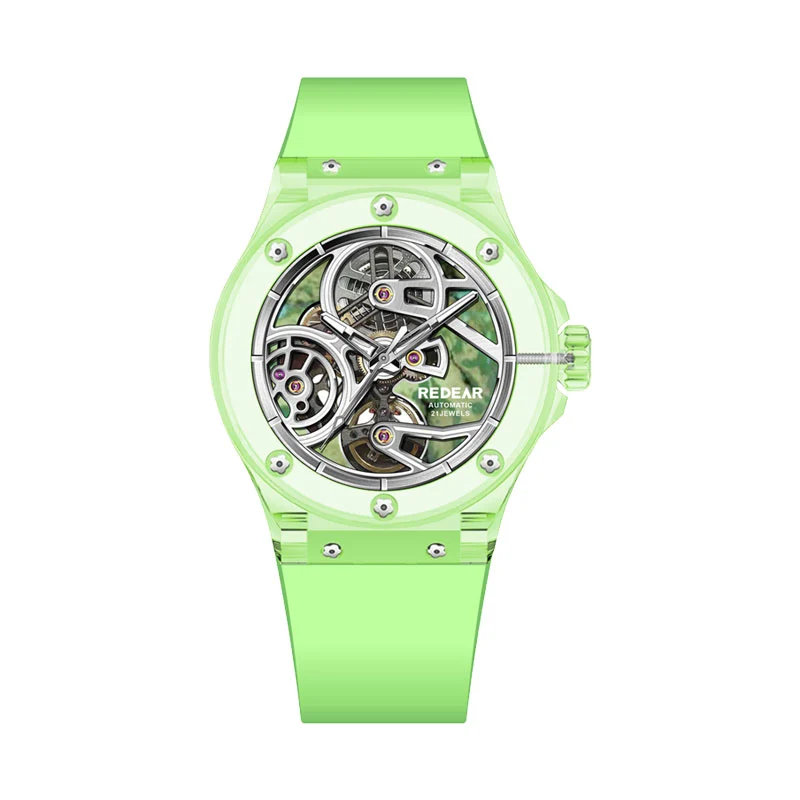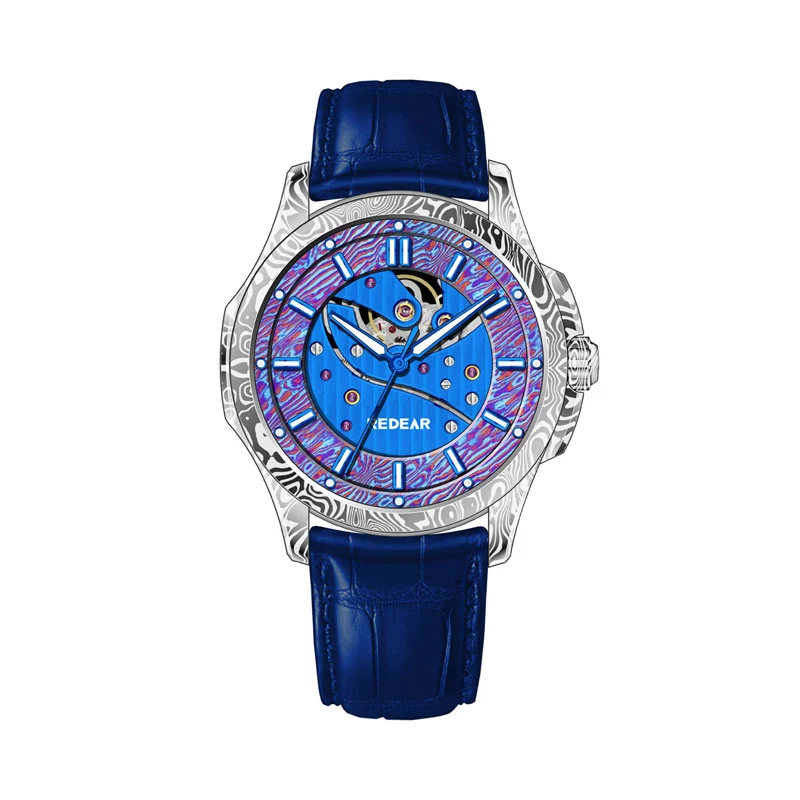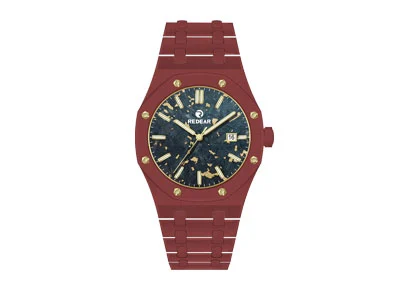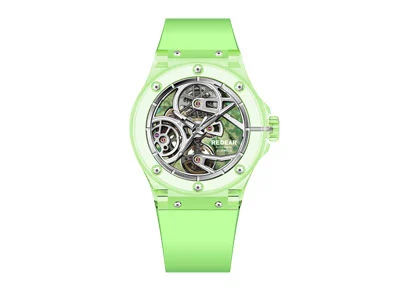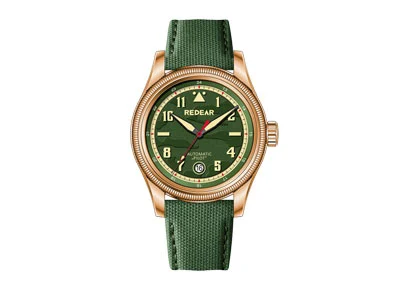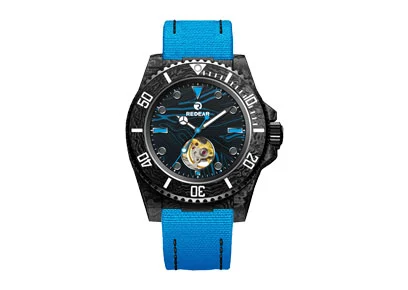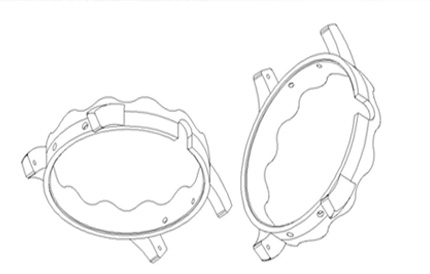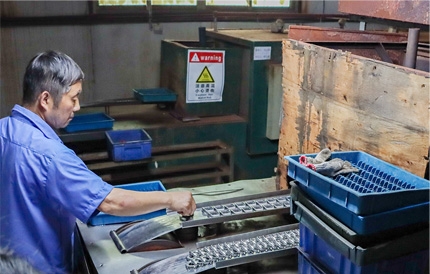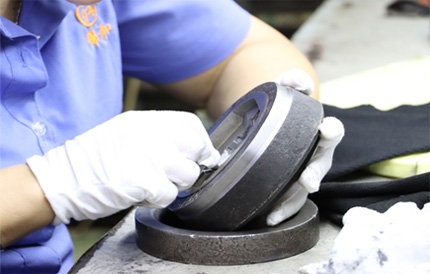There are many types of watches on the market, such as quartz watches and mechanical watches. Why do some watches have a continuous sweeping second hand while others have a jumping second hand? What are the differences in the internal structures of different watches?
Quartz Watch
The main component of a quartz watch is a relatively stable quartz oscillator. By "reading" the oscillation frequency generated by the quartz oscillator and using it to drive the mechanical parts of the clock to indicate time, a quartz watch can accurately tell time.
The most accurate quartz timer can be accurate to one hundred thousandth of a second, which means that after 270 years, the timing error of this quartz watch would be 1 second.
Currently, overall, custom quartz watches are more accurate than mechanical watches. The error of a mechanical watch is on average one second per day, while a commonly known quartz watch is on average one second off every ten days.
Except for some aerospace instruments and industrial instruments that require high accuracy, the accuracy of quartz watches can meet most daily timing needs, which is one of the important reasons why they have not been eliminated.
The core element of a quartz watch is a piezoelectric quartz crystal, which can produce the piezoelectric effect. The piezoelectric effect refers to the phenomenon that when an electric medium is subjected to external force in a certain direction and undergoes deformation, the internal positive and negative charges are unevenly distributed (charge polarization phenomenon), which generates voltage on both sides of the electric medium under pressure.
When the external force disappears, the electric medium returns to an uncharged state; when the direction of the external force changes, the polarity of the charge also changes.
After people became aware of this phenomenon, clever scientists used a reverse approach, applying voltage to two ends of the electric medium. So, under the voltage drive, the electric medium is compressed in this direction, which is the reverse effect of the piezoelectric effect.
Quartz crystal is an electric medium material that can produce the reverse piezoelectric effect. When a variable voltage with varying intensity is applied to two ends of the quartz crystal, it will continue to be compressed and released with the changes in the voltage, and hence it begins to vibrate.
When the quartz crystal is subjected to a frequency-stabilized alternating electric field, it will generate regular mechanical vibration. Due to the nature of the quartz crystal itself, its inherent vibration frequency is very stable and can be used for timing.
The quartz oscillator can produce a stable frequency signal. By utilizing the frequency divider to adjust the vibration frequency of the quartz to 2Hz and driving the motor to rotate, the rotation frequency is just 1 second/turn, so the second hand can move continuously.
When the quartz oscillator generates a periodic pulse signal under the ON state, the stator plate of the stepper motor in the clock generates magnetism and interacts with the rotor to overcome the positioning torque of the rotor, producing rotating torque. The rotor rotates 180 degrees and then stops again under the action of the positioning torque, requiring exactly 1 second, thus realizing the operation of reading the second.
Mechanical Watch
A mechanical watch is another common type of watch on the market. Although the internal structure of different mechanical watches may have significant differences in complexity, the main parts of their internal structures and the working principle for indicating time are basically similar. Mechanical watches wholesale provides retailers and consumers with a wide range of options and styles to choose from, catering to different preferences and tastes in the watch industry.
The internal structure of a mechanical watch mainly consists of the power system, transmission system, escapement controller, pointer system, and adjustment system for the pointer.
The spring belongs to the primary system, providing power to the mechanical watch; gears belong to the transmission system, and gear transmission can drive the escapement controller to work; the escapement controller, in turn, can control the speed of the gear to ensure the rotation frequency of the pointer is fixed to accurately indicate the time.
After winding the spring, energy is accumulated, which is transmitted to the escapement controller through the transmission system. The escapement controller divides the energy evenly to ensure that the rotation frequency of the pointer is constant, and then provides the energy through the transmission system to drive the pointer accurately to display seconds, hours, and minutes.
The spring is circular and is coiled in the spring box inside the watch. When winded, the winding stem rotates to wind the spring on the axis, increasing the torque of the spring and its elastic effect makes the spring box turn, thus driving the transmission system.
The escapement controller connects the spring with the balance wheel. It periodically transmits the energy provided by the primary system (spring) to the hairpin of the balance wheel through one interception and one release, one receiving and one releasing.
When the balance wheel deviates from its equilibrium position, it will produce a torsional torque. After the hairpin is twisted, it will produce a restoring torque, and the two work together to achieve the back-and-forth oscillation of the balance wheel system.
With the escapement system, the energy of the spring can be transmitted regularly to the transmission system, ensuring that the hairpin of the balance wheel can automatically maintain stable oscillation. Finally, the number of vibrations of the balance wheel pin is transmitted to the gears, driving the pointer to achieve accurate timekeeping.

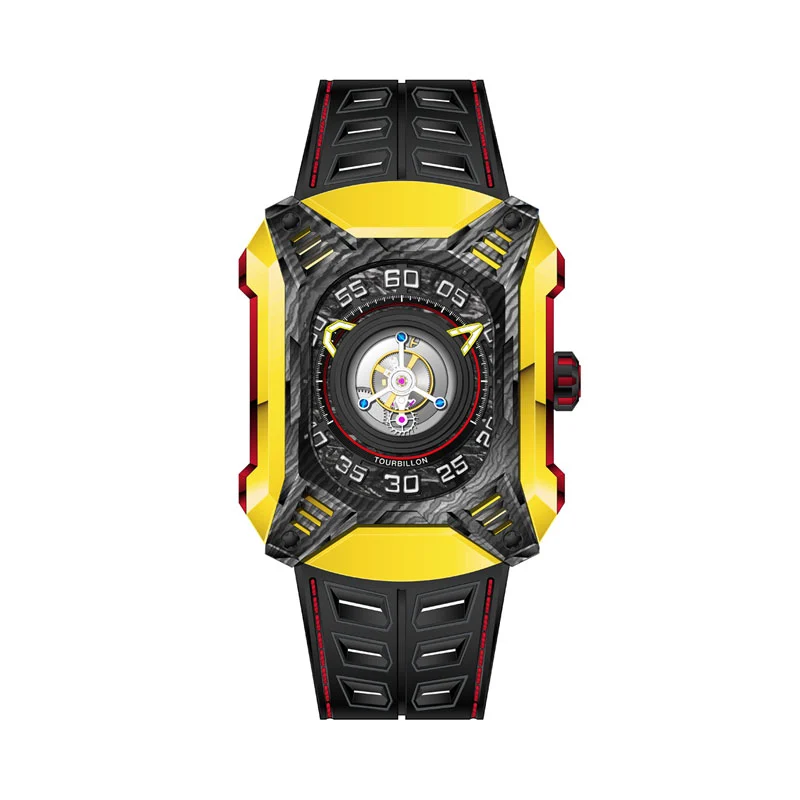 Luxury Hangzhou Tourbillon Mechanical Watch With Exquisite Carbon Fiber Hollow Design
Luxury Hangzhou Tourbillon Mechanical Watch With Exquisite Carbon Fiber Hollow Design
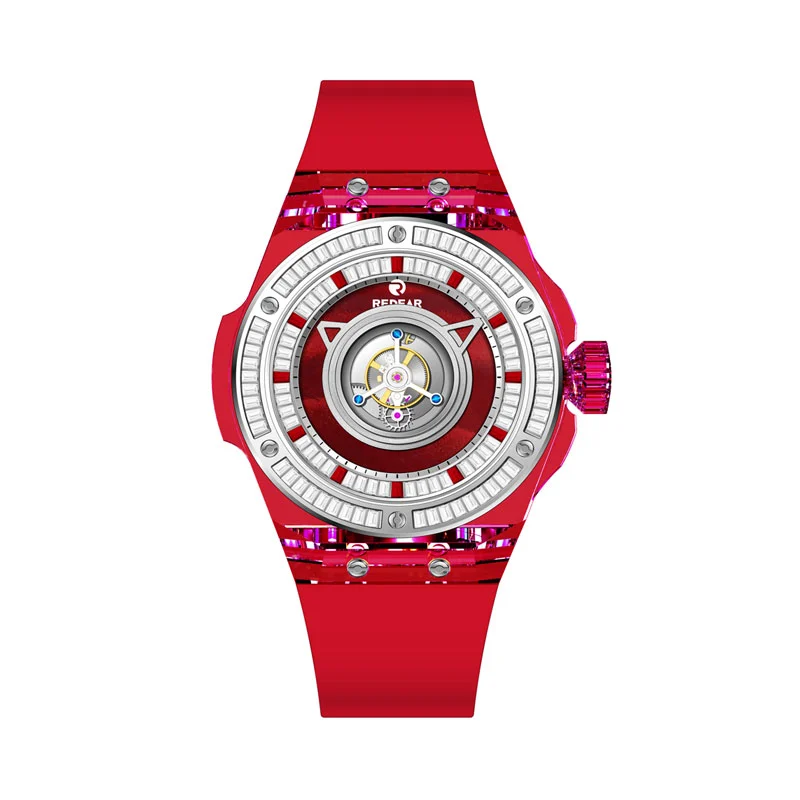 High End Hangzhou Central Tourbillon Mechanical Watch Adorned With Luxury Diamonds
High End Hangzhou Central Tourbillon Mechanical Watch Adorned With Luxury Diamonds
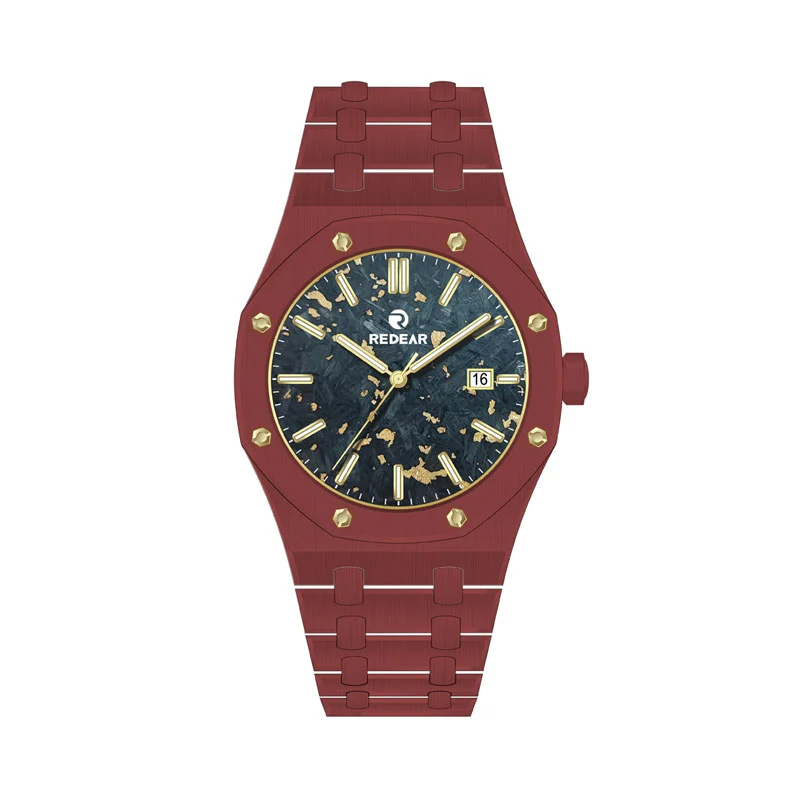 Ceramic Case Sapphire Carbon Fiber Dial Automatic Mechanical Watch
Ceramic Case Sapphire Carbon Fiber Dial Automatic Mechanical Watch
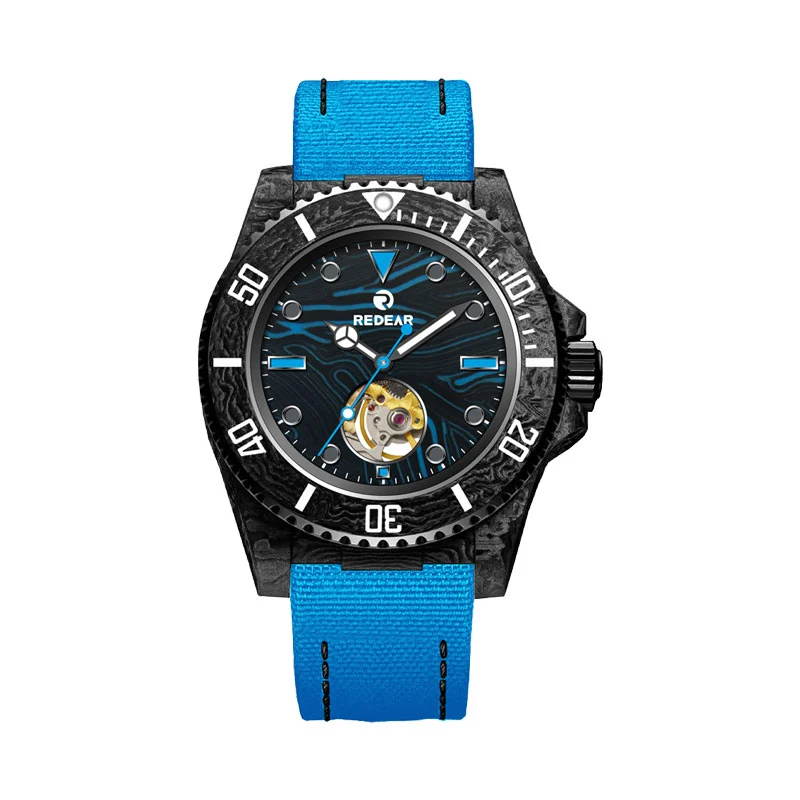 MIYOTA 90S5 Mechanical Watch with Carbon Fiber Case
MIYOTA 90S5 Mechanical Watch with Carbon Fiber Case
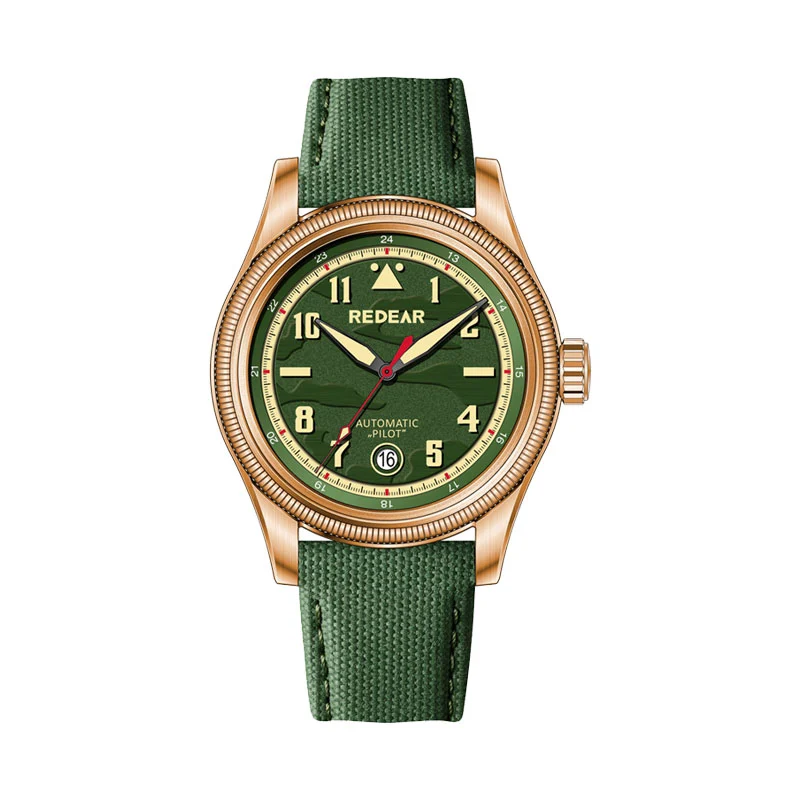 Personalized Bronze Mechanical Watch With Scratch-Resistant Sapphire Crystal Case
Personalized Bronze Mechanical Watch With Scratch-Resistant Sapphire Crystal Case
